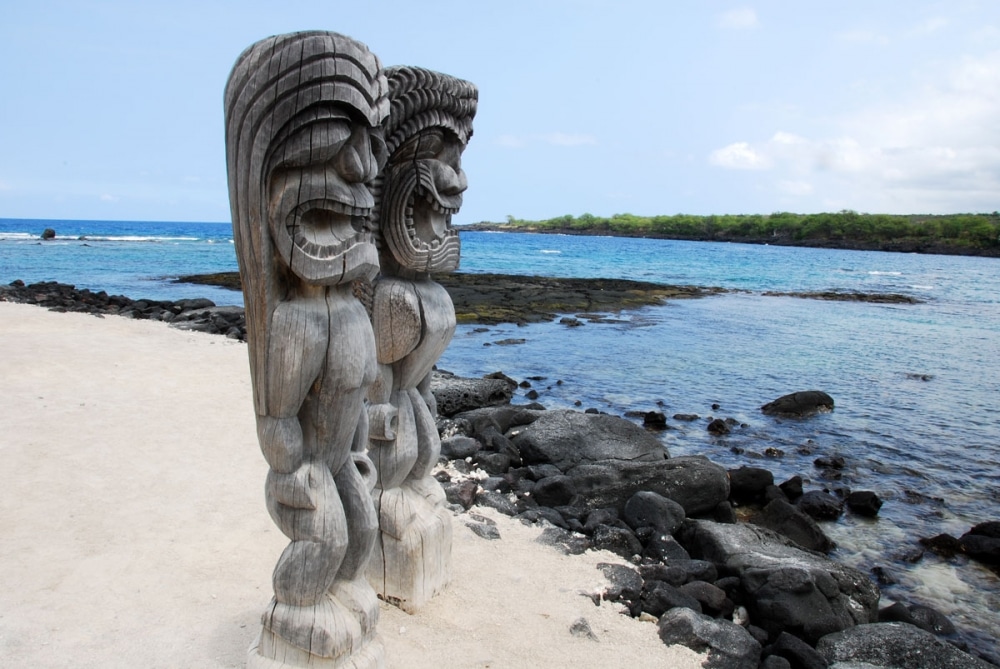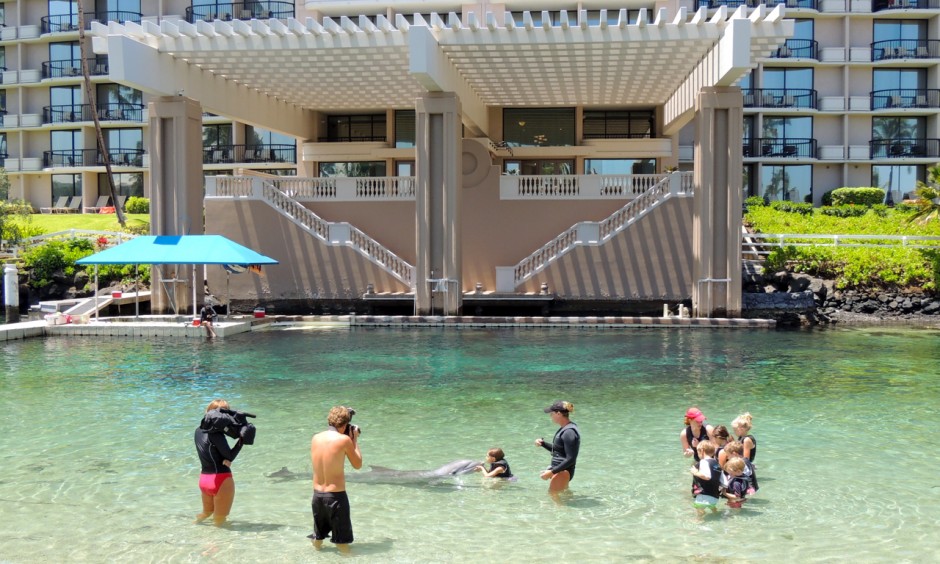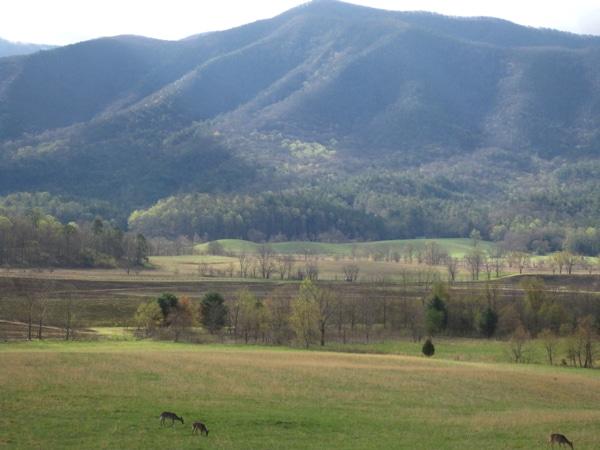California 1 is an engineering marvel, a highway that hugs the breathtaking California coast for hundreds of miles. It doesn’t go from the northern to the southern border, but it covers enough of the coast to satisfy you for a long time. US 101 will get you into California from the north, but while it stays close to the coast and the ocean comes out of hiding at several points, this highway stays east of the Pacific.
From the border with Oregon and for about seventy miles south, to the small fishing town of Trinidad (where we had fresh fish and chips at the Seascape restaurant, tucked into a cove with views of fishing boats and large rocks in the sea), 101 puts you in redwoods country. In 1850 there were about 2,000,000 acres of redwood forests in southern Oregon and northern California. In an oft-told tale, gold was discovered, this time in the Trinity River. Greedy whites came calling. The native peoples—who had managed to live in the area for thousands of years in harmony with the great trees, using them in daily life but not cutting them down en masse—were killed or booted out and left to fend for themselves; what gold there was in the rivers was taken; the miners then took up lumbering to feed the wood demand of the cities and towns; and before long, 90 percent of the redwoods were gone, forever.
Agitation to preserve the remaining forests began in the early twentieth century, and after more than forty years of efforts, the champions of the redwoods won federal government designation of Redwoods National Park. The park is a combination of national and state parks (the latter hads already been established, some as early as the 1920s) managed jointly by the United States and the state of California. Today, about 132,000 acres are protected by the parks. One of the state parks is named for the most famous of the mountain men, Jedediah Smith. He was the first white man to explore what later became Utah and Nevada, the first to cross the high Sierras, and the first to traverse California and Oregon up to the mouth of the Columbia River at modern-day Astoria. All this before the age of thirty-two, when he died in a battle with Comanche Indians. If you see a river, a town, a street, or a park named Smith, you can be almost certain that it was named for Jedediah Smith.
The rain, mist, and fog that makes the trees grow so tall kept us from exploring on this trip, but we did visit the Tall Trees Grove many years ago. We had to go to the ranger station in Orick, which is right on 101, and get a key to the gated road that leads to the trail, along which you can see some of the tallest trees in the world. Anyone interested in redwoods should read the remarkable essay by Richard Preston in The New Yorker. High up in the canopy made by the trees, there is an entire ecosystem, with up to three feet of soil, plants, and animals. There is a salamander living in the canopy that may never come down from it.
California 1 begins in the north at Leggett, where it joins 101. From here the road moves west to the coast and then south all the way to Los Angeles. It occasionally merges with 101, for example, across the Golden Gate bridge and through some of San Francisco, but for most of the way, it is California 1. We didn’t go from one end of he highway to the other, but we did drive it from the small village of Jenner, which is seventy-six miles northwest of San Francisco, to Cambria, which is just south of the Hearst Castle at San Simeon, a distance of nearly 300 miles. It is spectacular throughout, although the Big Sur section of it, from near Carmel to San Simeon, eludes adjectival superlatives. Tight curves on cliffs high above the ocean, on a road with parts that disappear every winter, make for a thrilling ride.
It is not easy to find inexpensive accommodations on California 1. When we were in Grass Valley learning about gold mining, we were trying to decide what to see next. We wanted to go to the Pacific coast, but we couldn’t locate cheap motels. After a tiring evening of searching on the internet, Karen remembered reading about the hostel at Point Reyes National Seashore. We have stayed in hostels, but we hadn’t been in one since 1995. We agreed that, although hostel living puts you in close sleeping quarters with strangers, they were cheap and we could cook in them. Plus we might meet interesting people. We could stay and hike in a national park. I called the hostel and made reservations. We’d have to wait two days, however, to begin our stay. We drove to the coast, thinking that we’d get a motel close to the hostel along California 1. But when we reached Bodega Bay and laid eyes on the Pacific for the first time in three years, we discovered that all that was available were overpriced “resorts” and bed and breakfast places. We drove the narrow, cliff-hugging highway north to Jenner, but again no luck. We turned around and went inland to Sebastopol, a pleasant-looking town that used to be a fruit-growing center, especially apples, but is now part of the Sonoma County wine country. We found what appeared to be the only motel in the city, and I asked about a room. The owner quoted a price that I thought was ridiculously high, and I told him I hadn’t planned on paying that much. He knocked off a few dollars, but I said this was still too much. “You’re not going to be busy tonight,” I said. He said, “What would you like to pay?” I offered an amount, and he took umbrage. “I have to represent my motel. It is not like other motels. The rooms are large and well-maintained.” I didn’t take the room, but I wondered not for the first time why a motel keeper wouldn’t take money he wouldn’t otherwise get, when he would have to pay the fixed costs anyway and the additional costs of our stay would be much less than what I offered. We got the last laugh, however. Karen said, “turn on your computer and see if this place has wifi.” I did, and it did. We went on priceline.com and bid $45 for a three-star motel in Santa Rosa. Our bid was accepted, and we happily proceeded to the town that Luther Burbank put on the map. The next day, we spent a few pleasant hours visiting the Luther Burbank Home and Gardens, admiring the trees, plants, and flowers, amazed at his ingenuity.
Point Reyes National Seashore was saved from development by an odd coalition of dairy and cattle farmers and environmentalists. The Miwok Indians who had originally inhabited this place of beauty and abundance practiced sophisticated land management, “burning, weeding, pruning and harvesting for at least two millennia . . .” Their work made the land especially suitable for dairy farming, which was practiced by the Californios (Mexican land grantees), whose ancestors had long ago stolen the Miwok’s land and condemned them to peonage and disease. After the United States in its turn stole the land from Mexico, via the Mexican-American war, the title to the land became subject to protracted legal battles, ultimately won by the Shafter brothers, San Francisco lawyers who hailed from Vermont. The Shafters built a dairy empire at Point Reyes, which ultimately declined in part because of the failure of the whites to continue the land improvements invented by the Miwok. This irony was coupled with another, the hiring of some now impoverished Miwok as farm laborers. Some dairies and cattle ranches continued to operate, and when some land passed into the hands of developers who began to build and sell houses near Drake’s Bay, the ranchers and the environmentalists won their fight to get the federal government to protect the land from development. All but two of the eighteen houses built were demolished (the remaining two are park employee residences), and the working ranches were allowed to continue operations under long-term agreements. This commercial activity, which also includes oyster farming, is why this is a national seashore and not a national park. If you visit Point Reyes, be sure to take the Tomales Point hike, which takes you alongside organic dairy farms and the historic Pierce Ranch, originally run by Solomon Pierce, who bought the land from his friends, the Shafter brothers. It is eye-opening to see cows grazing on large, open, green hills, with ample room to move, in close proximity to the sea. It might sound preposterous, but we observed contented, lean, and alert animals, not at all like the cows in the factory-like dairies so common elsewhere. Besides the cattle, there are large herds of tule elk, wild flowers in glorious profusion, and the waves smashing against the rocks. Pelicans, gulls, ravens, and many other sea birds abound.

- view near pt reyes lighthouse

- happy cows at point reyes







http://www.fs.fed.us/r5/rwhr/rentals.html
Fire watch towers. Just a thought for the travelin Bearcat.
Thanks, Mark. We will check into this for sure.